Borobudur Temple is a Buddhist temple located in Magelang, Central Java. It is also the largest Buddhist monument in the world.
Borobudur Temple was built by the Sailendra Dynasty between 780 and 840 AD and served as a place of Buddhist worship and pilgrimage. Borobudur was later discovered by British troops in 1814 under the leadership of Sir Thomas Stamford Raffles.
Borobudur is a temple featuring numerous stupas that contain instructions for humans to distance themselves from worldly desires and achieve enlightenment and wisdom, as per Buddhist teachings. Borobudur also has the most comprehensive and extensive collection of Buddhist reliefs in the world.
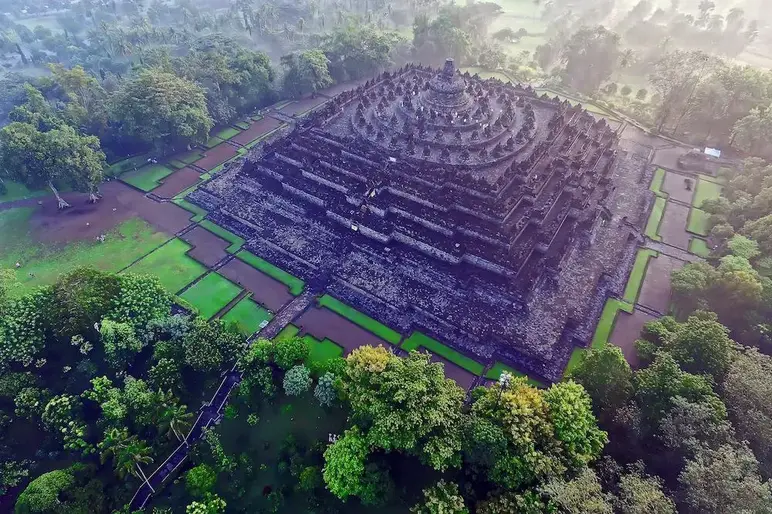
The main stupa, located in the center, serves as the crown of the building, surrounded by three circular rows of 72 stupas containing statues of Buddha seated cross-legged in the perfect lotus position. Since its discovery, Borobudur has undergone a series of restorations and restoration efforts.
Abandoned
Borobudur lay hidden and neglected for centuries, its remains buried beneath layers of soil and volcanic ash, then overgrown with trees and shrubs, until it truly resembled a hill. The true reason for its abandonment remains unknown.
Rediscovered
Following the war between the British and the Dutch over the island of Java, Java fell under British rule. At the time, Thomas Stanford Raffles, appointed Governor-General, had a particular interest in Javanese history. He collected ancient Javanese artistic artifacts and recorded Javanese history and culture, gleaned from his encounters with local people during his travels around Java.
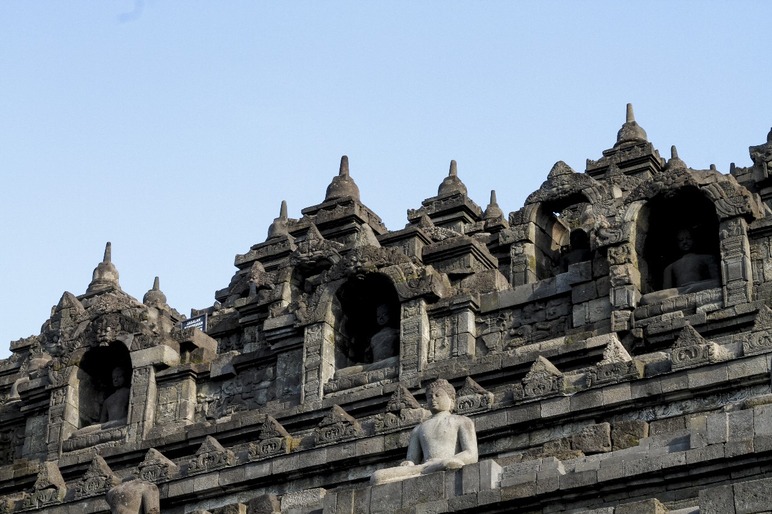
During his inspection visit to Semarang in 1814, he learned of a large monument deep in the jungle, near the village of Bumisegoro. Raffles is credited with rediscovering this monument and drawing international attention to its existence, which had been lost for centuries.
Many were stolen
For a long time, Borobudur had been a source of income for temple thieves and looters, as well as artifact collectors. The heads of Buddha statues are the most frequently stolen parts, as stealing the entire statue would be too large and heavy. This is why many headless Buddha statues are now found at Borobudur.
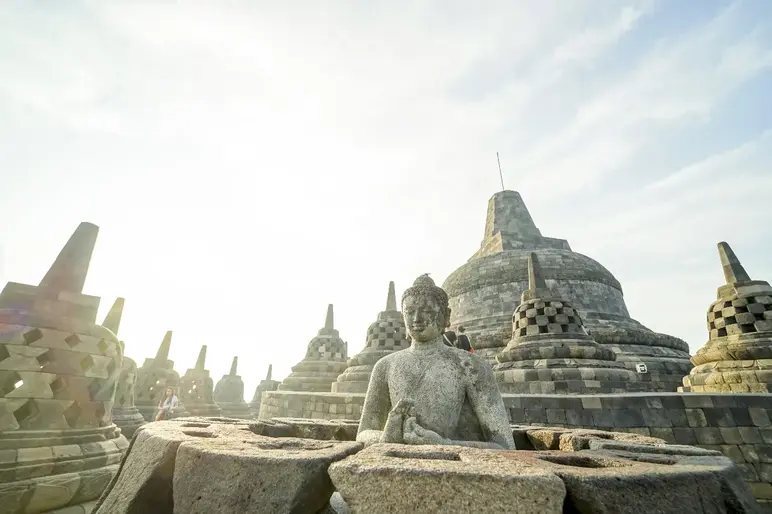
Building structure
Borobudur differs significantly from other temple designs, as it was not built on a flat surface, but on a hill. The Borobudur design uses the tala (tala) measurement unit, which is also used at Angkor Wat in Cambodia.
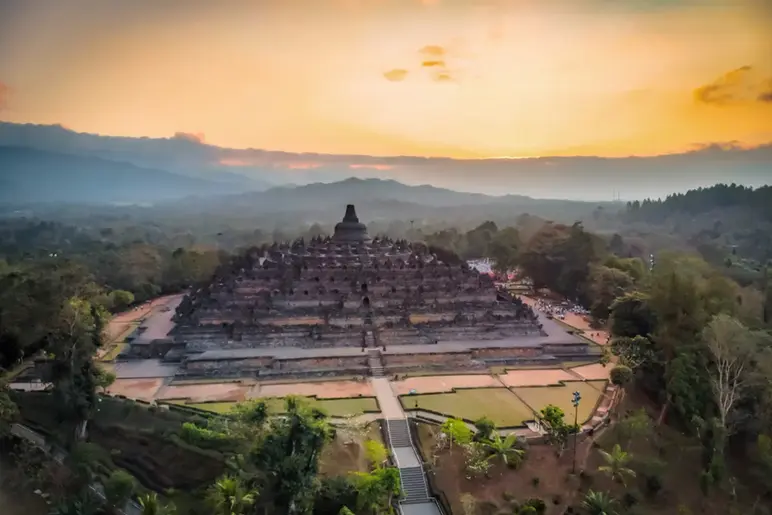
Restored
The largest restoration project was carried out from 1975 to 1982 under the efforts of the Indonesian government and UNESCO, resulting in Borobudur being listed as a World Heritage Site. This colossal restoration project involved 600 people and cost a total of approximately US$7 million.
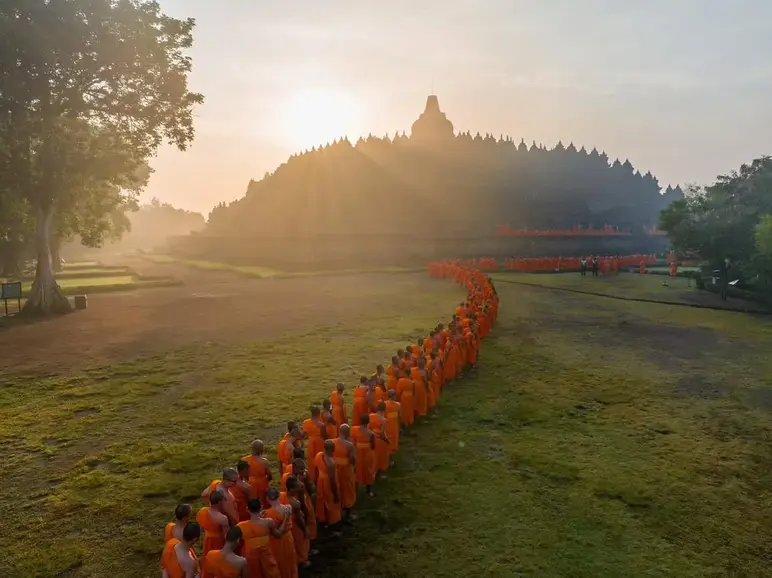
On February 11, 2022, the government officially reinstated the status of Bobobudur Temple as a place of Buddhist worship in Indonesia and the world. Every year, thousands of Buddhists from across Indonesia and neighboring countries gather at Borobudur to commemorate Vesak (Waisak).
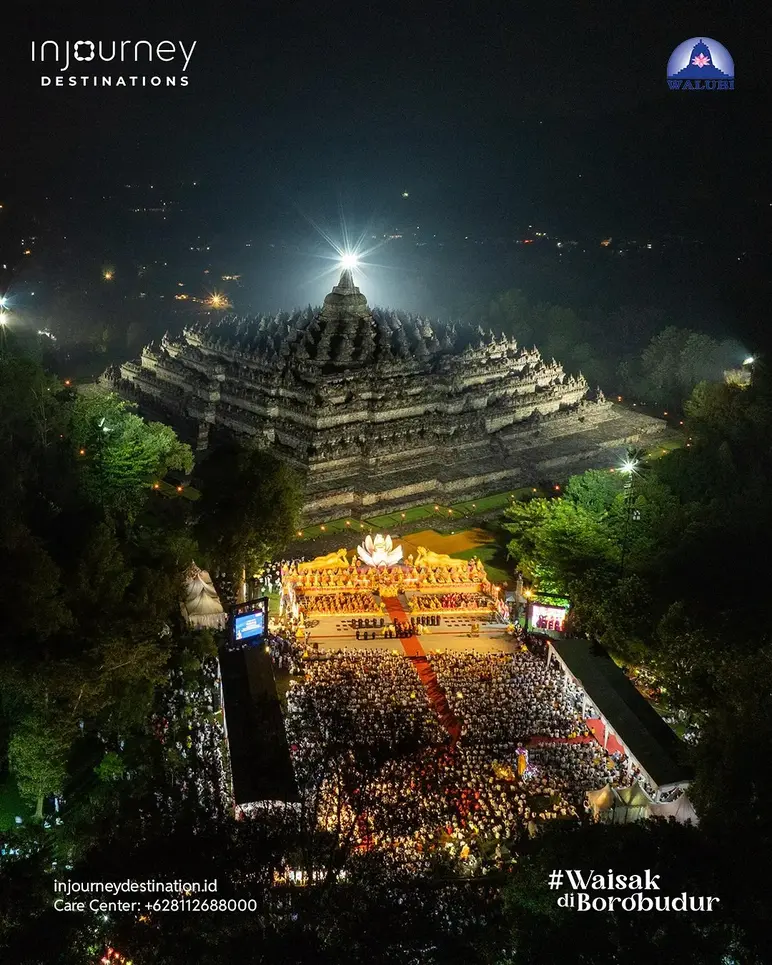
Other temples discovered
Besides Borobudur, there are several Buddhist and Hindu temples in the surrounding area. During the discovery and restoration of the early 20th century, other Buddhist temples were also discovered, namely Mendut Temple and Pawon Temple.



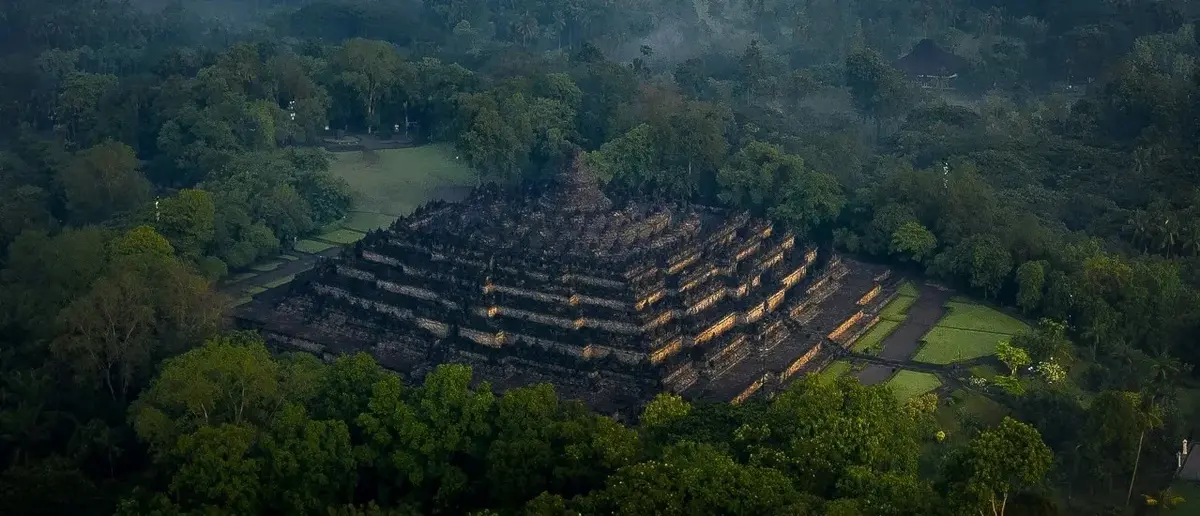
 Annissa Wulan
Annissa Wulan
 Oct 13, 2025
Oct 13, 2025